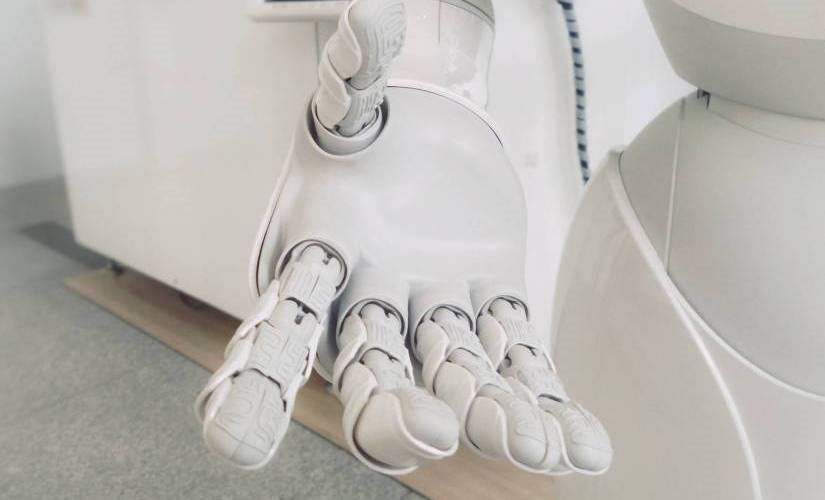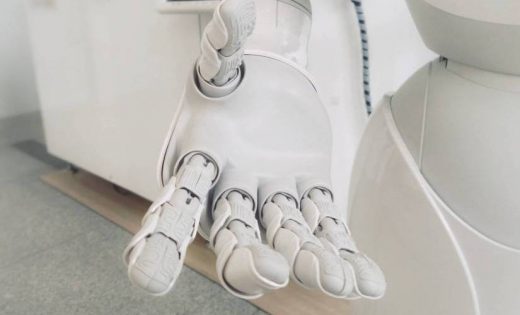Create Symbiotic Relationships with AI in Business
Create Symbiotic Relationships with AI in Business

Knowingly or unknowingly we are all using artificial intelligence or AI. There is a combination of always-on devices, cloud and edge computing, and APIs in our everyday lives and business practices bringing AI into practice. Here is how to create symbiotic relationships with AI in business.
Even though the relationship between humans and machines is growing ever closer, it’s much too early to describe many of these collaborations as symbiotic.
The current relationship between people and computers is probably best described as transactional.
When humans have specific types of problems, we’ve built and trained machines to solve those problems.
Examples include machine learning or ML. The ML algorithms that can identify cancer in brain images. The algorithms can also determine the best placements or designs for online ads, and there are deep learning systems that can predict customer churn in business.
At the moment, we can only imagine how much more productive we will become as we form symbiotic relationships with AI. Routine tasks that currently take hours or days could be abbreviated to 10 or 15 minutes with the aid of a digital partner.
From simple exercises like finding a new restaurant to more expert tasks such as cancer detection, we will increasingly rely on machines for everyday tasks. Dependence on machines might begin as a “second pair of eyes” or “ a second opinion,” but our commitment to machines (and AI) will evolve into full-on digital collaborators.
We will begin to form a symbiotic bond with machines and come to rely on them as much as we depend on our smartphones now.
Machine learning could bring about a revolution in how we solve problems to which the principle of “optimal stopping” applies.
Research in mathematics and computer science regarding these problems has shown that the optimal time to stop searching and make a decision is after 37% of the time has been spent, options have been reviewed, and parking spaces have been passed.
Examples of these sorts of traditions problems include hiring the right person, making the right amount of R&D investment, and buying or selling a home. Humans tend to stop searching and considering data at about 31% — well before they could have found the best option.
What do these statistics mean for us? The bare facts are these: we will use AI to improve our decision-making on multiple fronts and numerous levels.
Forming symbiotic relationships with machines will free up time for us to focus on honing soft skills such as empathy, management, and strategy. It is not unreasonable to conclude that this symbiotic relationship will even present a new factor in the simple ability to enjoy life outside of work.
Very soon, AI could help us review enough options to find the right homebuyer, apartment tenant, job applicant, and perhaps even the right spouse.
The Benefits of Embracing ML Advancements by Industry
For businesses and organizations with knowledge work as their output — employees will benefit in several ways by applying machine learning to their advantage. Employees will use applications that cut across a variety of industries.
Project Manager
Some industry-agnostic roles such as a project manager will be able to offload routine tasks.
The project manager can assign tracking, reporting, and follow-ups to a “digital agent” who will assist the manager day-to-day.
Tech will benefit substantially. Similar to how content creators benefit from writing agents such as Grammarly, software developers will benefit from a “pair programming agent.” The “agent” will suggest not only the right code syntax, but also the most appropriate framework, library, or API.
These agents will also have the opportunity to improve code quality and user experience drastically.
Construction
For industries like construction, AI could take advantage of the increased digitization of blueprints. AI will automate tasks that are routine but critical as project estimation. Depending on the size of the project, a human estimator can take up to four weeks to estimate a project.
An AI agent trained to estimate construction projects could easily “read” digital blueprints and estimate project scope.
Effortlessly, a digital agent could determine the materials needed for the project and set the number of workers necessary to staff the project.
More dramatic still, the AI digital agent could be connected to a supply store — and incorporate real-time pricing into the final quote.
Medicine
Medicine is another prime example of an industry ripe for disruption through human-AI symbiosis.
Pharmaceuticals
Pharmaceutical companies are leveraging machine learning to determine the optimal levels of research and development, using factors such as projected market size, revenue, and lifetime value of potential drugs.
Many doctors and hospitals have begun to incorporate AI recommendations into their processes. Increasing successes are seen, with 35% of doctors in a 2019 survey stating they use AI in their practices.
Some approaches in medicine have leveraged AI to provide potential options to doctors. Other choices analyze a doctor’s recommendation to predict the probability of success.
Malpractice and healthcare.
The dynamic symbiotic relationship between doctors and AI will also likely alter how malpractice risk is assessed for insurance.
As AI becomes more commonplace in healthcare and is proven to improve outcomes for patients and decrease costs for hospitals, malpractice insurance will evolve to see AI as a way to reduce overall risk.
Similarly, doctors and hospitals that invest in AI solutions will see an improved return on investment in the form of lower insurance costs, improved outcomes, and increased efficiency.
The Journey to Put AI-Human Symbiosis to Work
Organizations that want to embrace the advances in AI and ML to produce symbiotic relationships between machines and themselves can take these steps.
1. Make an unbiased assessment of AI’s effects on you.
The first step is to assess how artificial intelligence stands to impact your business as well as your industry and value chain. Examine whether you can add AI to your services.
Will AI change your product entirely, or can AI open new possibilities for entirely new products and services?
Once you complete your assessment and identify your options, break down your potential financial value to the organization. The assessment will uncover both potential risks you could incur and opportunities for new revenue streams you could open once you achieve AI-human symbiosis.
2. Get a grip on your data.
Every organization needs to learn where its data is stored and used. Proactively make this data available across the organization for experimentation, proofs of concepts, and other innovation projects.
Break down any existing barriers to sharing data, whether it’s a lack of trust over security or embarrassment over the dataset’s overall quality.
Gain a firm understanding of what data you have and who owns it — and share the information across the organization safely and democratically. The open network and feeling you are creating with this action are crucial to enabling machines to work for you, and sowing the seeds of innovation.
A proven approach to increasing the value of your data.
- Implement data governance.
- Leveraging cloud-based solutions such as data lakes. The data lakes are to store your structured data contained in databases and spreadsheets.
- Leveraging cloud-based solutions for unstructured data such as your documents, images, and videos.
3. Look for symbiotic opportunities across your talent.
Assess your workforce to determine the roles that will most likely benefit from AI and machine learning solutions. The assessments can be divided into varying styles across individual employees or teams. These assessments include:
Thinking Styles
Data-driven thinkers versus big-picture focus thinkers.
Strength Areas
Strengths in strategy versus problem-solving strengths.
Skillsets
Skill sets in software development versus the risk assessment skill set.
Expertise
Is the talent expertise contained in surgery versus the expertise in research and development?
Machines are forging new opportunities for human work throughout the value chain as humans and machines collaborate to create more meaningful human jobs.
4. Introduce changes that fit your organization’s purpose.
An organization must align its approach to building symbiotic relationships with its overarching purpose — and that begins with leadership.
Leaders must excite their workforces about the ultimate goal of integrating AI, provide a clear vision for the organization’s goals, and assure their workers that machines will enhance and alter (but not replace) their roles.
It’s important to create near – and long-term plans and then share those timelines across the organization, and connect those benchmarks to your greater purpose.
Within the next decade, symbiotic relationships with AI will feel as natural as our relationships with our smartphones.
Organizations won’t be able to take advantage of the value of these symbiotic relationships without carefully appraising the opportunities and risks.
Businesses must get their data houses in order and encourage innovation that enhances their talent and their organization’s purpose. Only then will humans use AI to its full potential.
Image Credit: franck-v, Unsplash
The post Create Symbiotic Relationships with AI in Business appeared first on ReadWrite.
(6)


